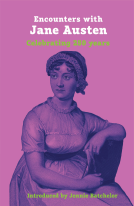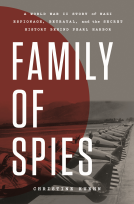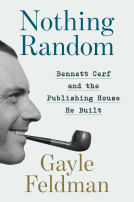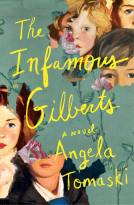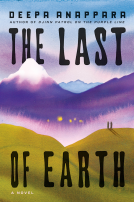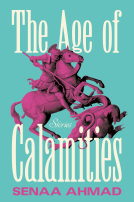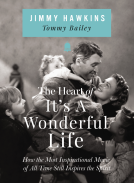
Songs of Sorrow
Lucy McKim Garrison and Slave Songs of the United States
by Samuel Charters
This title was previously available on NetGalley and is now archived.
Send NetGalley books directly to your Kindle or Kindle app
1
To read on a Kindle or Kindle app, please add kindle@netgalley.com as an approved email address to receive files in your Amazon account. Click here for step-by-step instructions.
2
Also find your Kindle email address within your Amazon account, and enter it here.
Pub Date Apr 07 2015 | Archive Date Feb 16 2016
University Press of Mississippi | American Made Music Series
Description
The untold story behind the creation of the classic songbook Slave Songs of the United States
In the spring of 1862, Lucy McKim, the nineteen-year-old daughter of a Philadelphia abolitionist Quaker family, traveled with her father to the Sea Islands of South Carolina to aid him in his efforts to organize humanitarian aid for thousands of newly freed slaves. During her stay she heard the singing of the slaves in their churches, as they rowed their boats from island to island, and as they worked and played. Already a skilled musician, she determined to preserve as much of the music as she could, quickly writing down words and melodies, some of them only fleeting improvisations. On her return to Philadelphia, she began composing musical settings for the songs and in the fall of 1862 published the first serious musical arrangements of slave songs. She also wrote about the musical characteristics of slave songs, and published, in a leading musical journal of the time, the first article to discuss what she had witnessed.
In Songs of Sorrow renowned music scholar Samuel Charters tells her personal story. Letters reveal the story of young women’s lives during the harsh years of the war. At the same time that her arrangements of the songs were being published, a man with whom she had an unofficial “attachment” was killed in battle, and the war forced her to temporarily abandon her work
In 1865 she married Wendell Phillips Garrison, son of abolitionist William Lloyd Garrison, and in the early months of their marriage she proposed that they turn to the collection of slave songs that had long been her dream. She and her husband—a founder and literary editor of the recently launched journal The Nation—enlisted the help of two associates who had also collected songs in the Sea Islands. Their book, Slave Songs of the United States, appeared in 1867. After a long illness, ultimately ending in paralysis, she died at the age of thirty-four in 1877. This book reclaims the story of a pioneer in ethnomusicology, one whose influential work affected the Fisk Jubilee Singers and many others.
Samuel Charters, Storrs Mansfield, Connecticut, is the author of A Trumpet around the Corner: The Story of New Orleans Jazz, the award-winning The Roots of the Blues, and numerous other titles. He is co-author of Brother-Souls: John Clellon Holmes, Jack Kerouac, and the Beat Generation. A resident of Connecticut and Stockholm, Sweden, he is also a Grammy-winning record producer, musician, poet, and fiction writer, and was inducted into the Blues Hall of Fame in 1994.
Advance Praise
No Advance Praise Available
No Advance Praise Available
Marketing Plan
No Marketing Info Available
No Marketing Info Available
Available Editions
| EDITION | Hardcover |
| ISBN | 9781628462067 |
| PRICE | $55.00 (USD) |
Average rating from 4 members
Featured Reviews
Imagine traveling through a treacherous war zone, crossing the sea on a steamer to an unknown island. There is no pier and you are carried through the surf to the beach. The humidity and heat, the mosquitoes, are unlike anything you have ever experienced.
You see for the first time contraband slaves, ten thousand refugees without proper homes or food, but jubilant in their newfound freedom. You hear their songs, weird and otherworldly, in dialect foreign, so unlike the sentimental minstrel songs carried to the North. The plaintive Go Down, Moses with it's cry for freedom; The Lonesome Valley about the emotional preparation for baptism; Michael row the boat ashore; the upbeat Rock O' My Soul and Do Remember Me; Jacob's Ladder, Roll Jordon, Roll and The Stars Begin to Fall--sorrow songs of the plantations that today are well known but in 1861 had been dismissed by the denizens of the Plantation and were unheard by the general public of the North.
Samuel Charter's new book Songs of Sorrow: Lucy McKim Garrison and Slave Songs of the United States chronicles the brief life of McKim and her role in the first documentation of the songs of slavery.
In 1861 nineteen-year-old Lucy McKim left her home in Germantown, outside of Philadelphia, on the biggest journey of her life. Lucy's Abolitionist Quaker father James Miller McKim was head of the Philadelphia Port Royal Relief Committee and was chosen to visit Port Royal in South Carolina where former slaves had sought refuge. He was to report back on conditions. The freemen needed immediate aid and help to prepare them for their new reality. He asked Lucy to serve as his secretary.
The island was surrounded by Confederate troops. It was a dangerous journey. Lucy gloried in the adventure. She had trained in piano and classical music and taught piano students in Philadelphia. She was delaying marriage to "live for herself" first. An ardent Abolitionist, Lucy felt the constraints of her sex, her uselessness compared to what men could do.
Seeing face to face the suffering of the slaves Lucy wrote, "How lukewarm we have been! How little we know!" Encountering the music of the freemen was a revelation. Lucy heard their hopes and dreams, their sorrow and loss in the music. She recorded seeing two "shouts" and one "praise," religious gatherings of the contraband.
She copied down the songs she heard. Within months of returning home she had published Poor Rosy, Poor Gal.
Poor Rosy, poor gal,
Poor Rosy, poor gal;
Rosy break my poor heart,
Heav'n shall be my home.
Lucy married Wendell Garrison, son of Abolitionist William Lloyd Garrison. (Her best friend Ellen Wright, niece of Abolitionist and Women's rights activist Lucretia Mott, married Wendell's brother Lloyd Garrison.)
During her first pregnancy Lucy worked to prepare the songs for publication, knowing that motherhood would preclude finishing her work. She was assisted by William Francis Allen and Charles Pickard Ware. Additional songs were collected by Thomas Wentworth Higginson (Emily Dickinson later sent her poems to him), Lucy Towne (who was trained in medicine and gave her life to educating the Port Royal freemen). This first collection of American slave songs was published in 1867.
Lucy's health declined with each pregnancy and miscarriage. She suffered from rheumatism and strokes. At the age of 34, paralyzed and unable to speak, Lucy refused food.
Charter's use of letters and diary entries brings Lucy to life. Lucy would be thrilled to know that the songs she recorded have become known to all Americans, and would be honored to have her brief life's work remembered in this biography.
Included is the full text of Songs of Slavery, complete with Lucy's musical adaptations and words to the songs, and with the introduction by William Francis Allen. Charters draws from Lucy's many letters and other documents, allowing her to come alive. Those interested in America's musical heritage and in women's history will enjoy reading it.
I received a free ebook through NetGalley in exchange for a fair and unbiased review.
 rachel m, Reviewer
rachel m, Reviewer
This is a really fabulous look at the capture and history of culture. I enjoyed the passion behind the pain-staking research done in cultivating and preserving an inimitable part of human experience. Perfect for Black History month and of interest to historians of social, culture and musical lines, Songs of Sorrow is a glorious, indepth look at a multi-layered and multi-faceted cultural history.
Readers who liked this book also liked:
Jennie Batchelor, Julia Quinn, Natalie Jenner, Charlie Lovett, Talulah Riley, Janet Todd et al
Essays & Collections, Novellas & Short Stories, Women's Fiction

